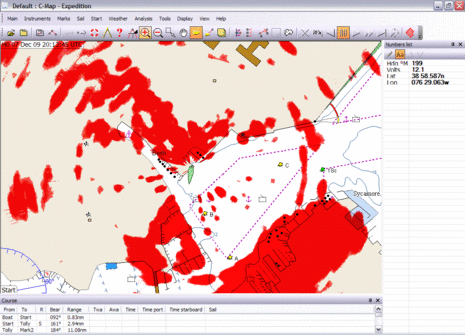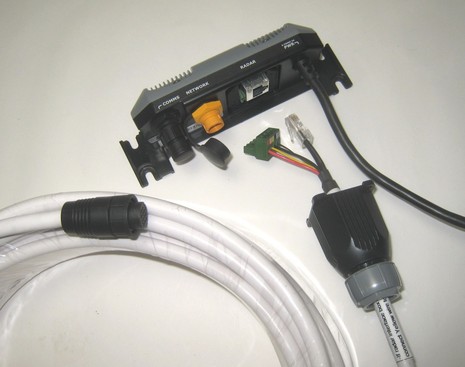Simrad BR24PC, Free Range BroadBand Radar #2

We had a false start in December when we first saw the PC charting program Expedition interfaced to a Navico BR24 radar, but as of last night this interesting possibility, and many like it, seem to be official. Read the full press release here. I think this means that Expedition and some other charting programs may soon be able to run a Broadband Radar, with or without a Simrad (or Lowrance?) multifunction display involved, but there are a few details of the plan and implementation that I'd like to know more about...
The BR24PC will not be an open source SDK (software development kit), for instance, but instead only licensed to "approved third parties". This is understandable, I think, but I do wonder which parties Navico might not approve of? Like MaxSea and Nobeltec, nearly half owned by Furuno? (Would they be interested anyway?) I also wonder what the line about how the "BR24PC SDK is available with two levels of functionality and requires unique unlock codes..." means. Will free range Broadband radars cost significantly more than they do when bought as part of Simrad system (about $1,600-$1,900 street)? If there is a premium, will it still apply if you also have a Simrad NSE in the system (a nice combination on two-helm-boats like Gizmo methinks)? {Please see comments for update on pricing.}There are also two hardware interface issues, surmountable no doubt, but to be noted. You can see below that the BR24 cable ends in a standard, though waterproofed, Ethernet connector at the R11 (or R10) interface box. But the Ethernet output on that box uses Navico's own connector. You can simply skip the interface box altogether, but not if you want MARPA. The BR24 needs to have fast heading data injected into that Comms port (even when the same data is present in an NSE connected to the box via Ethernet!) to do the MARPA processing, which is unusual and not well documented in the manual. Maybe Simrad will produce a patch cable with their Ethernet plug on one end and a standard RJ-45 on the other, and, besides, our man Kees has already figured out how to make one yourself.
But these are probably all just little quibbles. Overall this is an exciting development in marine electronics, I think -- and hopefully not the last Ethernet marine sensor to go free range -- and I know a lot of you agree. Let's discuss.


 Share
Share
I would expect "Approved third parties can obtain a license to the BR24PC SDK" to mean that a software vendor signs a contract with Navico under which it can re-license to individual end users for a fee paid per software license. Applied to the example of Rose Point Coastal Explorer (purely speculative at this point), their Radar addition to Coastal Explorer would have to be marked up by the fee paid to Navico for a single user license or something close to it (from this page http://coastalexplorer.net/store/products/7 I understand that the radar add-on to Coastal Explorer for use with an existing Koden radar is available independently, quote: "The suggested retail price for the add-on is $399. It can be purchased directly from Rose Point, or one of their authorized resellers."). In the case of Expedition, there would either have to be an add-on license to allow connectivity to a BR24PC or the price of the whole product is increased by that amount. This is assuming that neither vendor feels like eating the added cost of the license from Navico.
There is no mention of this amount in the press release. If it is $1,500, neither vendor is likely to offer, or, if they did, I wouldn't be interested. If it is a few hundred, I'd be interested.
Ben or someone else (Kees?), how would you compare the BR24's ability to see an approaching weather front or storm cell? In https://www.panbo.com/archives/2009/08/18_radomes_4_the_wet_edition.html you said "The Navico BR24 also did a good job of seeing through rain at very close and medium ranges in auto mode. In fact, I had to fool with the Rain Clutter control to see rain at all, though that didn't help much beyond a few miles, at least in this confined location."
I once went through the Kiel Canal in the densest fog I have seen yet. I couldn't see the bank of the canal 20 feet to starboard and from time to time could hear and sense but not see the towering steel wall of a container ship about 20 feet to port. I could feel the boat ride up the bow wave, then slide down the other side. My existing radar was completely useless. The BR24, mounted 10 feet above the water instead of halfway up the mast, would have shined in that situation.
But I also want to sail the ARC and have a 20 minute warning of an approaching squall.
Will the BR24 give me that?